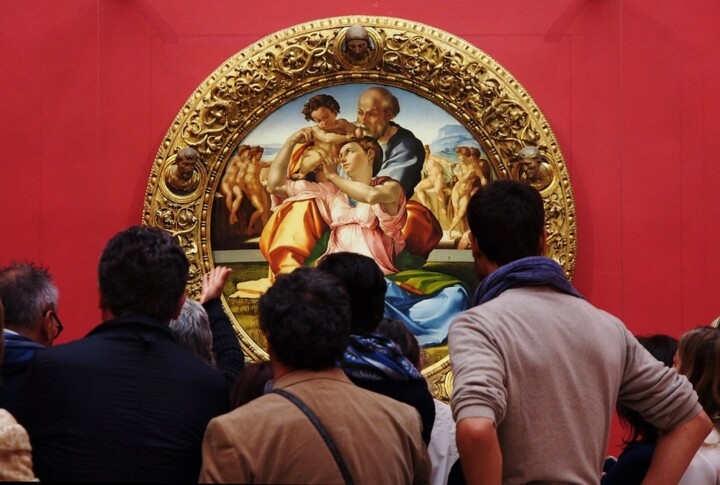 Doni Tondo, Michelangelo, Uffizi Gallery (Florence, Italy)
Doni Tondo, Michelangelo, Uffizi Gallery (Florence, Italy)
An NFT based on Michelangelo's famous painting Doni Tondo (1505-06) sold for €240,000 last year, earning the Galleria Degli Uffizi in Florence €70,000, according to figures released by the museum recently. The work was created by Cinello, a Milan-based company, as part of a five-year agreement that was supposed to result in the creation of 40 digital works. The development is part of an ongoing debate in Italy concerning ownership and copyright issues concerning major masterpieces housed in national collections.
In 2016, the Uffizi signed a contract with Cinello to create DAWs (encrypted digital artworks). "The collaboration with Cinello lasted five years and will end in December 2021." During this time, Cinello had the right to make NFTs of the works included in the agreement; however, only the Tondo was made," a Uffizi spokesperson says. "For each DAW, an NFT token is created on the Blockchain; this certifies the ownership of the work," according to the Cinello website. According to the Cinello website, "each DAW, an NFT token is created on the Blockchain, which certifies ownership of the work." According to the spokesperson, "income from the reproduction of the image is split in half between the company and the museum; the Cinello copy [made] about €140,000 [on the €240,000 sale], so the Uffizi received €70,000 [along with Cinello]." The remaining €100,000 was spent on "production costs". The Michelangelo NFT was purchased by a collector in Rome.
However, the move has raised concerns about whether major works will be "for sale." Last month, an article in the Italian newspaper La Repubblica asked, "Who owns Michelangelo's Doni Tondo?" .... who owns the legal rights to the work? Is it possible for the buyer to exhibit it without the permission of the Uffizi? Essentially, do we not run the risk of losing control of our heritage at a time when we are increasingly gravitating toward the metaverse?" According to the newspaper, Italian government ministers are also concerned about the deal with Cinello.
The Uffizi says in a lengthy statement, "Basically: do we not risk losing control of our heritage...?" In reality, [existing laws] provide timely and precise answers to those questions long before the invention of the relevant technology, i.e., the Ronchey law of 1994, and again the Urbani code of 2004.... the rights [associated with the works] are in no way alienated, the contractor has no right to use the images granted for exhibitions or other unauthorized uses, and the assets remain firmly in the hands of the Italian Republic." Museums all over the world are attempting to profit from NFTs. In collaboration with the French start-up LaCollection.io, the British Museum (BM) in London recently sold NFTs of JMW Turner and Hokusai works from its collection. The royalty agreement between LaCollection.io and the British Museum remains private.
Earlier this year, the Uffizi, Parma's Complesso Monumentale della Pilotta, and Milan's Pinacoteca di Brera and Biblioteca Ambrosiana all sold digital facsimiles of Raphael and Leonardo da Vinci works at Unit London Gallery.


 Jean Dubreil
Jean Dubreil





